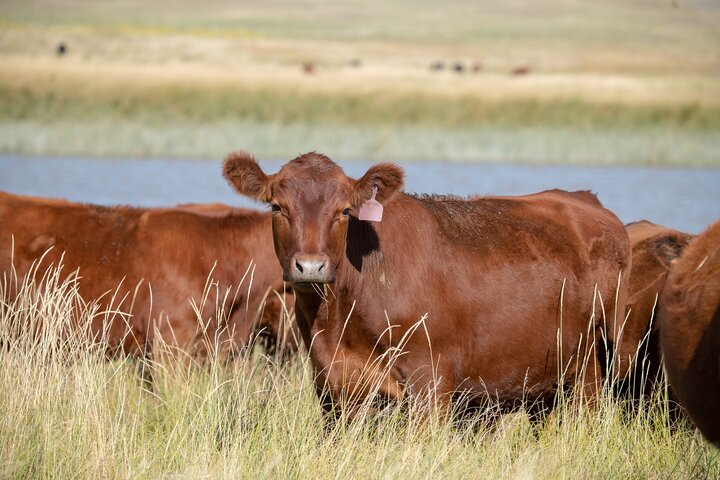This article was originally featured in Progressive Cattle.
As producers begin selecting replacement heifers, a commonly asked question is, “What is the best method for developing heifers?” Considering the expenses involved in developing replacements, determining the most cost-effective system for a specific production environment is important for both long-term profitability and longevity of those females.
Target Weight Gain
Traditionally, it has been recommended to target 65% of mature body weight at breeding time. However, more recent research has shown that heifers can be developed to reach nearly 50% of mature body weight at breeding without negatively impacting pregnancy rates. When heifers are developed at a lower rate of gain, it is important to provide an increased plane of nutrition prior to breeding and through calving.
Timing of gain from weaning to pre-breeding has shown to have minimal impact on reproductive performance. Therefore, heifers can be grown at a consistent rate of gain, a low rate of gain followed by a high rate of gain, or vice versa. Again, providing adequate nutrition prior to breeding and through calving is an important factor that will influence reproductive success. Additionally, over-conditioning heifers can not only be costly but can also negatively impact future fertility.
Once a target body weight for breeding time has been determined, target average daily gain (ADG) can be calculated. For example, if the target is 60% of mature weight at breeding time and estimated mature weight of your herd is 1,200 lb, a 500-lb weaned heifer would need to be grown to reach 720 lb at breeding (1,200 lb × 0.60 = 720 lb). If the heifer was weaned on October 1st and the target breeding date is May 1st, there are approximately 210 days to reach the target body weight. The difference in target and current weight (720 lb – 500 lb = 220 lb) divided by 210 days until the breeding season results in a target average daily gain (ADG) of 1.05 lb/day.
Feeding Systems
Depending on feed costs and resources available, there are several options for heifer development rations. A 4-year study conducted by the University of Nebraska showed no difference in pregnancy rates or feed efficiency as first-calf heifers when developed on corn residue, upland range, a low-energy diet in a drylot, or a high-energy diet in a drylot. Grazing an oat-brassica cover crop followed by corn residue grazing with distillers grains supplementation has also been shown to be a viable option for developing heifers.
When evaluating feed options for replacement heifers, consider using similar feedstuffs that those females will be expected to consume as mature cows. This will help them better adapt to their production environment and allow the higher maintenance females to naturally sort themselves out.
Summary
The diversity in heifer development systems allows producers to design a program that meets the needs of their operation without sacrificing reproductive performance. Determining the most cost-effective system to develop heifers in a given production environment is critical to keeping those females in the herd long-term.
Nebraska Extension Educators and Specialists are available to assist producers with developing rations to meet their cattle nutrient needs. For more information regarding heifer development systems, see the Heifer Nutrition and Management page at beef.unl.edu.
Interviews with the authors of BeefWatch newsletter articles become available throughout the month of publication and are accessible at https://go.unl.edu/podcast.

